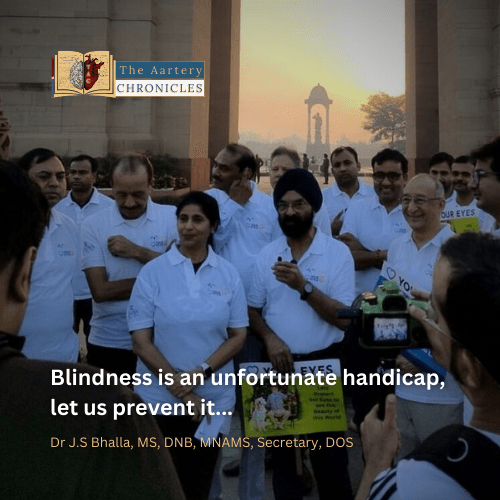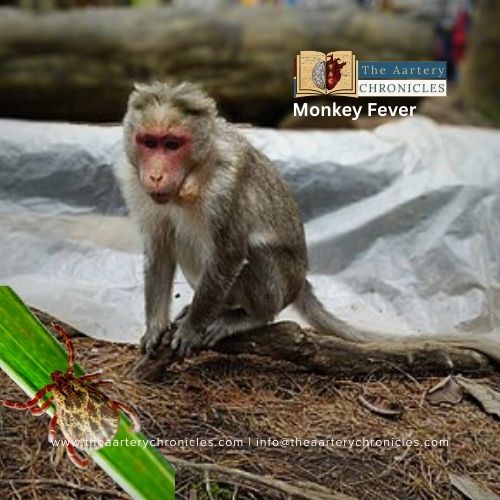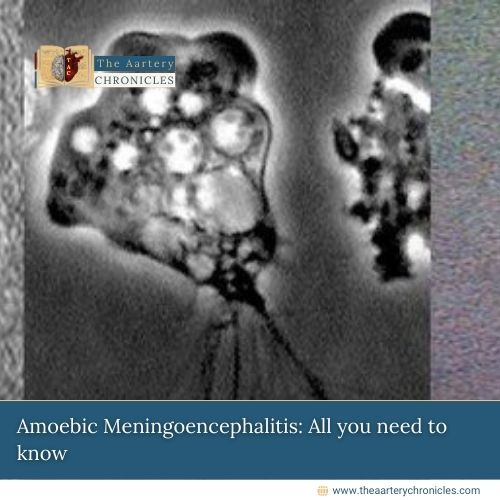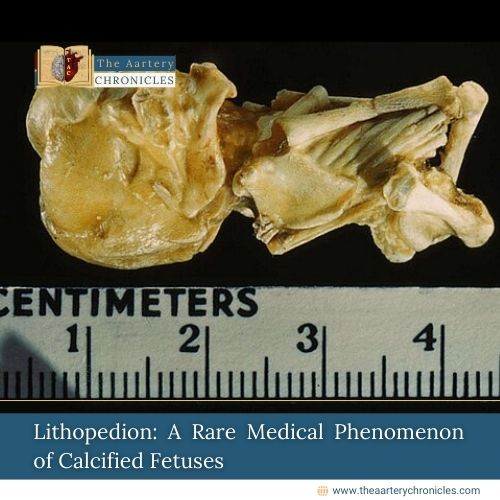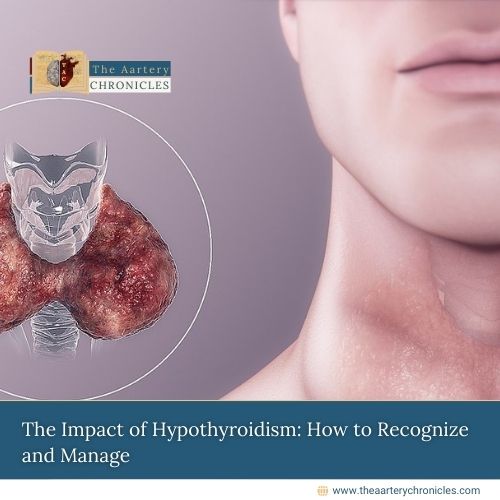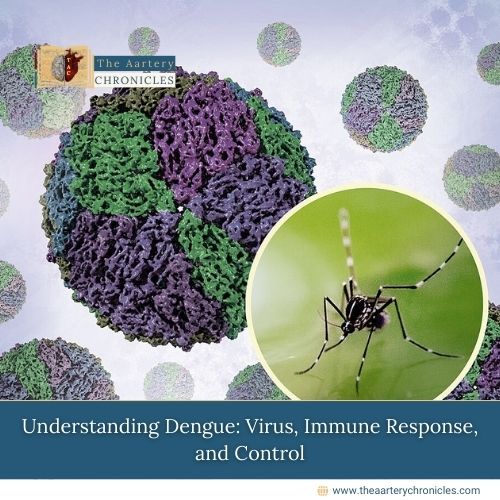
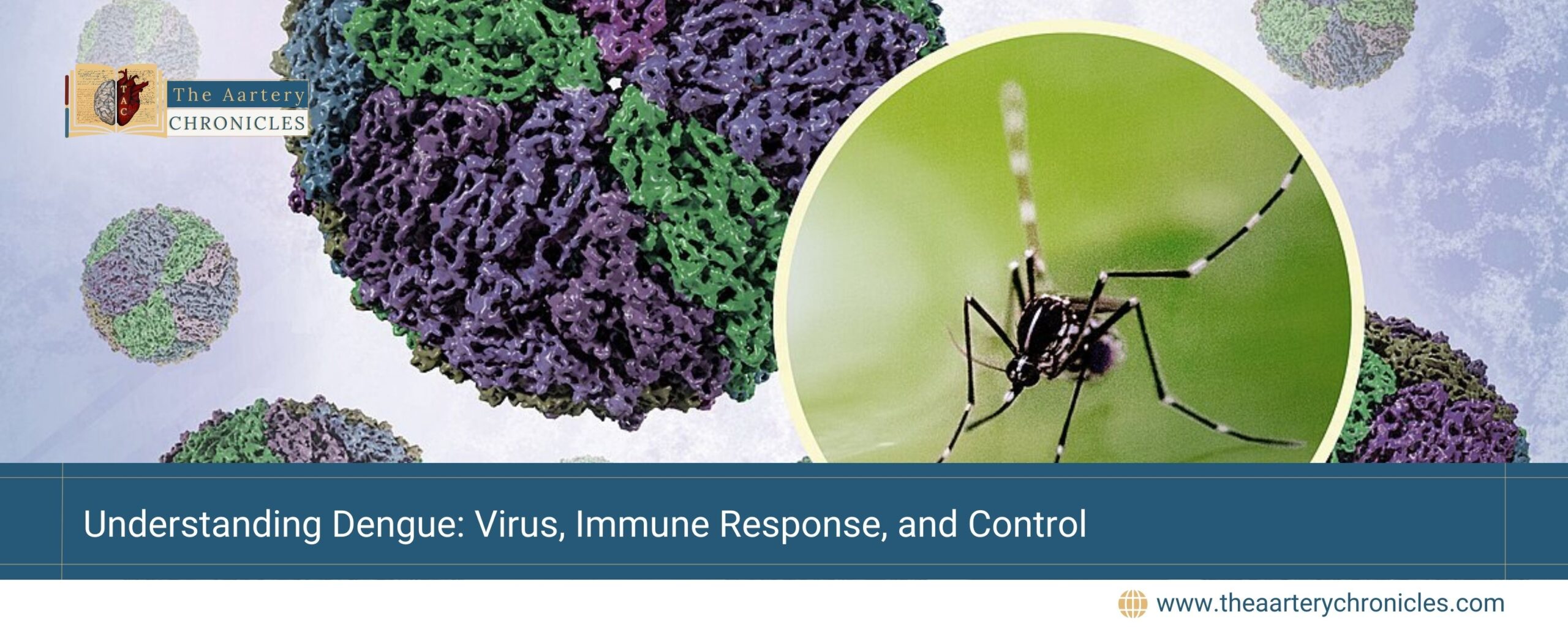
Understanding Dengue: Virus, Immune Response, and Control
Introduction
Every year, nearly 400 million people worldwide are infected with dengue fever, making it one of the fastest-growing mosquito-borne diseases in the world. In 2024, Over 7.6 million dengue cases have been reported including 3.4 million confirmed cases, over 16,000 severe cases, and more than 3000 deaths.
In recent years, its reach has expanded rapidly, affecting tropical and subtropical regions, and spreading to previously unaffected areas due to climate change.
Pathogen of Dengue
It is caused by the Dengue virus (DENV).
- DENV is a single-stranded positive-sense RNA virus of the family Flaviviridae, genus Flavivirus.
- It causes a wide range of diseases in humans, from mild febrile illness (Dengue Fever) to severe forms such as dengue hemorrhagic fever (DHF) and dengue shock syndrome (DSS)
Types of Serotypes
Four main antigenically different serotypes are
- DENV-1
- DENV-2
- DENV-3
- DENV-4
In 2013, a fifth type (DENV-5) was discovered in the Sarawak state of Malaysia through testing and genetic analysis.
Modes of Transmission of Dengue
- Mosquito Bites:
- Dengue is spread when an infected mosquito (mainly the Aedes aegypti) bites a person.
- In 2023, there was a rise in dengue spread by another mosquito, the Aedes albopictus (tiger mosquito), in Europe.
- Human-to-Mosquito Transmission:
- A mosquito can get the virus from someone with dengue, even before they show symptoms or do not feel sick.
- The risk is higher if the person has a high fever or virus in their blood.
- The virus can be transmitted up to 2 days before and after the fever ends.
- Mother-to-Baby:
- Though rare, dengue can pass from a pregnant mother to her baby.
- This can sometimes lead to issues like early birth or low birth weight.
- Other Ways:
- Dengue can rarely be spread through
- Blood transfusions
- Organ donations
- Through mosquitoes from one generation to the next (transovarial transmission )
- Dengue can rarely be spread through
How does the Dengue Virus Affect our Body and Immune System?
Cellular Mechanisms Underlying Dengue Virus Infection
- When a mosquito bites and introduces the dengue virus (DENV) into a host cell, the viral RNA (vRNA) is translated into a single polyprotein, which host and viral enzymes then cut into smaller proteins: structural proteins (C, prM, E) and nonstructural proteins (NS1, NS2A, NS2B, NS3, NS4A, NS4B, NS5).
- Among these, NS5 acts as an RNA-dependent RNA polymerase, synthesizing new viral RNA and adding a protective cap for stability, and the NS2B/NS3 complex serves as a serine protease to process the polyprotein and assist in vRNA synthesis.
- Newly formed viral particles bud into the endoplasmic reticulum and then move to the Golgi apparatus for final maturation and infectivity before being released via exocytosis.
- DENV also induces the formation of replication factories (RFs) within the cell, including vesicle packets and convoluted membranes, to enhance viral replication.
- The virus alters cellular organelles, such as mitochondria, to support its replication and evade the host’s immune response by masking its viral signature and inhibiting antiviral signaling pathways, effectively hijacking the cell’s machinery for its replication.
- Now, the infected immune cells send out signals (cytokines), calling other immune cells to fight the infection. This triggers inflammation, which can cause fever, pain, and fatigue.
Immune Reactions and Risk Factors
- The immune response can damage blood vessel linings, making them leak fluid.
- This leads to plasma leakage, which can cause low blood pressure and, in severe cases, dengue hemorrhagic fever (internal bleeding).
- The virus also can cause a drop in platelet count (cells that help with blood clotting). A low platelet count increases the risk of bleeding.
- The immune system also makes antibodies to fight the virus.
- These antibodies are usually helpful, but with dengue, if someone is infected again with a different strain of the virus, these antibodies can worsen the response (this is called Antibody-Dependent Enhancement, ADE).
Common Symptoms of Dengue Infection
- Headache
- Retro-orbital pain (pain behind the eyes)
- Myalgia (muscle pain)
- Arthralgia or bone pain (joint or bone pain)
- Loss of sense and appetite
- Rash
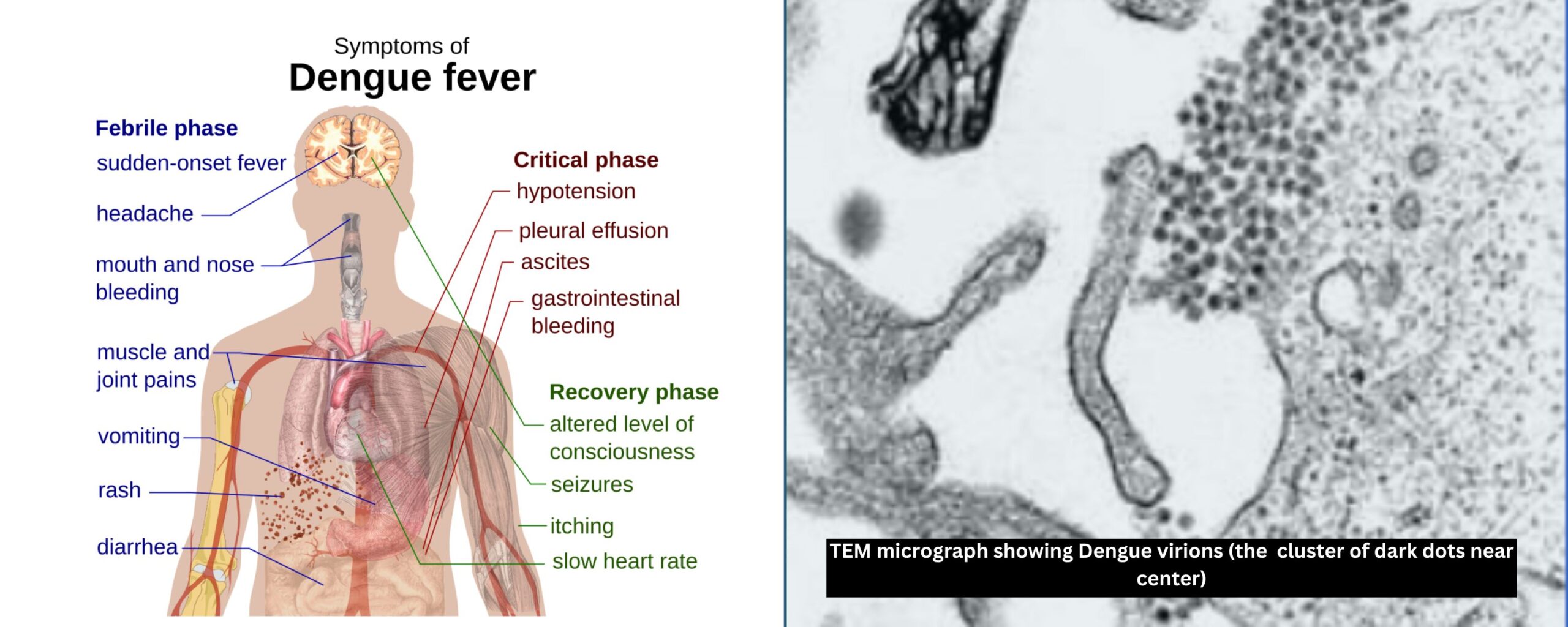
Severe Symptoms of Dengue Hemorrhagic Fever (DHF) and Dengue Shock Syndrome (DSS)
Dengue hemorrhagic fever (DHF) and dengue shock syndrome (DSS) are the most severe and potentially fatal forms of dengue. They are characterized by
- Cold, clammy skin
- A rapid weak pulse
- Severe abdominal pain
- Bleeding manifestations such as
- Nasal bleeding
- Gum bleeding
- Gastrointestinal bleeding
- Skin hemorrhage
- Hematuria (blood in the urine)
Laboratory Findings in Dengue Infection
- Leukopenia (WBC ≤ 5,000 cells/mm3)
- Platelet count ≤ 150,000 cell/mm3
- Hematocrit (Hct) rising 5–10%.
Treatment of Dengue
- Fever control: Use paracetamol and cool sponge baths to reduce fever.
- Encourage oral intake:
- Offer soft foods, milk, fruit juice, and oral rehydration solutions (ORS).
- Drink plenty of water.
- Avoid IV fluids unless the patient has vomiting or significant dehydration.
- Daily Monitoring: Check complete blood count (CBC) every day.
- Emergency Signs: Advise immediate hospital visit if the patient experiences any of the following:
- There is no improvement despite the fever going away.
- Severe stomach pain or vomiting
- Bleeding
- Restlessness, irritability, drowsiness
- Refusal to eat or drink, excessive thirst
- No urination for 4-6 hours
- Vaccine: Dengvaxia is the only marketed dengue vaccine that is approved by the WHO, but for the age group 9–45 years, living in a dengue-endemic region and having had laboratory-confirmed DENV infection in past.
Control Measures of Dengue
Physical Control
- Remove stagnant water: Mosquitoes lay eggs in still water. Empty and clean containers like buckets, flower pots, or coolers every week.
- Cover water storage containers: Always keep your water tanks, drums, or any water-filled containers tightly covered.
- Clean and scrub regularly: Clean water storage containers weekly to remove mosquito eggs that may stick to the walls.
- Use mosquito repellents: Apply mosquito repellent creams or sprays on exposed skin, especially during the daytime.
- Dress in protective clothing: Opt for long-sleeved shirts, long trousers, and socks to reduce skin exposure.
- Use mosquito nets and screens: Sleep under a mosquito net, especially for children, pregnant women, and elderly people.
- Use coils and vaporizers: Use mosquito coils or electric vaporizing mats to keep mosquitoes away.
- Dispose of waste properly: Ensure no garbage or waste is lying around that can hold water.
Biological Control
- Biological Control Agents: Introduce Biological agents in ponds and water bodies such as Gambusia affins, Poecilla reticulata, Mesocyclops, and Utricularaia macrorhiza.
- Paratransgenesis and Wolbachia: This involves genetically modifying bacteria in mosquitoes to reduce their ability to transmit disease. The Wolbachia bacteria, for example, affects mosquito reproduction and development, limiting dengue spread.
- Sterile Insect Technique (SIT): Sterile male mosquitoes are released to prevent reproduction, effectively controlling mosquito populations in urban areas.
Chemical control
- Insecticides and Plant Derivatives: Traditional insecticides are widely used, but resistance has developed. Alternatives include plant-based insecticides, which are less harmful to the environment.
- Insect Growth Regulators (IGRs): These chemicals disrupt mosquito growth, preventing them from reaching adulthood. Certain IGRs, like cyromazine, have shown effectiveness in reducing larval populations.
- Pheromone-Based “Attract-and-Kill”: This strategy uses pheromones combined with insecticides to lure and kill mosquitoes at various developmental stages, effectively reducing their population.
Conclusion
Dengue is not just a tropical disease it is a growing global threat that is affecting more and more people each year, largely due to climate change. By removing places where mosquitoes breed, using repellents, and staying informed about the virus, we can prevent dengue before it becomes a serious problem. Consult your doctor if you see any of the symptoms of dengue. Always Remember that Prevention is better than cure.

Priya Bairagi
Reviewed by Dr. Aarti Nehra

